I am excited to announce the publication of my paper on Hebrew Numerology in the Book of Mormon in the most recent issue of BYU-Studies, 53:2. The thesis of the paper is that the same type of numerology used by Hebrews in the ancient world shows up in the Book of Mormon. The paper focuses on the number seven, resulting in the snazzy title, “A Study in Seven.”
The goal of this post is to set forth in brief some of the findings of that paper and why I conclude that the author or authors of the Book of Mormon were familiar with the symbolic significance of the number seven as used in the ancient world of the Bible and intentionally used it in structuring the text.
In the interests of space and readability, this post will not go into detail nor will it give a lot of footnotes. Detail and footnotes may be found in the paper itself, should the reader wish to pursue the subject further.  Like Sammy Davis, Jr. used to say in his live performances, “If you want to hear me sing regular, buy my albums.”
Like Sammy Davis, Jr. used to say in his live performances, “If you want to hear me sing regular, buy my albums.”
The Magnificent Seven
In many ancient cultures, including that of the Hebrews, numbers were imbued with symbolic significance. Based on frequency of usage in both the Old and New Testaments, seven was the number of greatest importance.
Seven is a combination of 3 and 4. Three represented the heavens. Four represented the earth. Seven represented all things both in heaven and earth, and hence came to be seen as a number of completion, fulfillment and even perfection.
Seven is used many times throughout the Bible in symbolic ways.
- The Creation account is seven days. (Gen. 2:3)
- The Sabbatical year is every seventh year. (Lev. 25:4)
- God commanded Moses to displace seven nations from Canaan. (Deut. 7:1)
- Elisha commanded Naaman to wash seven times in Jordan to be cured. (2 Kgs. 5:10-14)
- Seven baskets of surplus food are left after the multiplication of loaves. (Matt. 15:32-37)
- Peter asks if he should forgive seven times. (Matt. 18:21)
- Seven churches are addressed in Revelation. (Rev. 1:4)
Seven is also used throughout the Book of Mormon in symbolic ways.
- Seven rebellions by Laman and Lemuel are recorded in 1 Nephi.
- Seven churches are noted in the land of Zarahemla. (Mosiah 25:33)
- Seven converted Lamanite cities and lands are listed. (Alma 23:7-13)
- The Nephite monetary system is based on the number seven. (Alma 11)
- Seven are killed by Ammon at the Waters of Sebus. (Alma 18:16)
- Seven “deadly sins” of Nephites are listed by Mormon. (Alma 50:21)
- Seven missionary companions are taken by Alma to the Zoramites. (Alma 31:6-7)
Did you see what I did there? I listed seven usages of seven from the  Bible and then seven more usages of seven from the Book of Mormon. I ended up listing fourteen (2×7) such usages.
Bible and then seven more usages of seven from the Book of Mormon. I ended up listing fourteen (2×7) such usages.
Seven and Multiples of Seven
Why did I make two lists? To illustrate that multiples of seven are used to enhance the symbolism. Doubling seven to fourteen is the numerological equivalent of capitalizing, underscoring and bold-facing the significance.
We also see multiples of seven in the Bible.
- Jacob served Laban seven years for Leah; then another seven years for Rachel. (Gen. 29:18, 30)
- Joseph prophesied seven years of plenty followed by seven years of famine. (Gen. 41:26-30)
- Israelites circle Jericho seven times on the seventh day. (Josh. 6:1-6)
- Passover is held on the fourteenth day of the first month. (Lev. 23:5)
- Solomon has a feast for “seven days and seven days, even fourteen days.” (1 Kings 8:65)
- God tells Elisha a remnant of seven thousand faithful Israelites remain. (1 Kings 19:18)
- Jesus tells Peter to forgive seventy times seven (Matt. 18:22)
The Symbolic Genealogy of Jesus
Doubling seven for symbolic effect finds its way into the New Testament, where Matthew takes pains to list the genealogy of Jesus in three groups of fourteen generations each. (Matt. 1:1-17) From Abraham to David are fourteen generations; 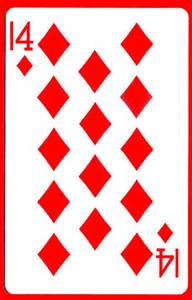 from David to the destruction of Jerusalem are fourteen generations; and from the destruction of Jerusalem to Jesus are fourteen generations.
from David to the destruction of Jerusalem are fourteen generations; and from the destruction of Jerusalem to Jesus are fourteen generations.
But Matthew’s genealogy is clearly artificial. In Matthew’s third list of fourteen generations, there are actually only thirteen names. It is Matthew who insists there are fourteen. (Count them yourself.)
Additionally when you compare Matthew’s genealogy with the Old Testament, you will find he skips several generations in order to make the number come out to fourteen.
In other words, it is more important for Matthew to have the number come out at the symbolically significant number of fourteen than it is to accurately count the actual number of generations. Matthew wants to use the number fourteen, and he wants to use it three times, in order to further enhance the symbolic significance of what is going on. Why is this? Because Matthew is not giving a history lesson. Matthew is teaching something.
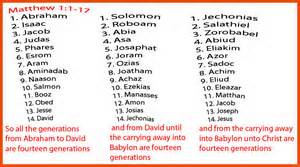
Some people want Matthew’s genealogy of Jesus to be three lists of fourteen so badly they will fudge a bit to make it fit. Hint–Keep your eye on Jechonias.
Matthew is teaching a divine design; he is teaching that God is in control of the history of Israel; he is teaching that every fourteenth generation, something of immense significance happens; and he is teaching that fourteen generations after the Babylonian captivity, something significant was bound to happen; and that something significant was Jesus’s birth.
Matthew is consciously constructing his narrative to teach something much more important than a drily accurate genealogy. He is teaching that Jesus is an important part of God’s plan for Israel. A correct listing of the genealogy pales in comparison. Matthew is teaching a more profound truth than simple accuracy. Matthew is teaching the deep truth of God. And he is using numerology to do it.
Three Sets of Fourteen in the Book of Alma
Something similar happens with the construction of the book of Alma. The first fourteen years cover Alma’s activities among the Nephites. (Alma 1-16) The next section covers the same fourteen years, but in a flash-back relating what the sons of Mosiah were doing during that same period of time. (Alma 17:5-27:16)
We know both periods are fourteen years because the book of Alma begins with the first year of the reign of the judges; Alma has just assumed the offices of both chief judge and high priest (Mosiah 29:42) while the four sons of Mosiah have headed off to preach the gospel to the Lamanites. (Mosiah 28:9)
But when Alma happens to meet the sons of Mosiah in Alma 17, we are expressly 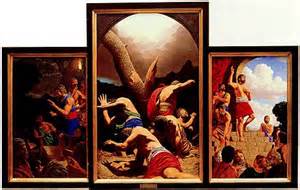 told that the sons of Mosiah “had been teaching the word of God for the space of fourteen years among the Lamanites.” (Alma 17:4)
told that the sons of Mosiah “had been teaching the word of God for the space of fourteen years among the Lamanites.” (Alma 17:4)
That is the key. It tells us not only that the mission of the sons of Mosiah to the Lamanites lasted fourteen years, but also that the account given of Alma’s activities after the sons of Mosiah left is fourteen years.
So now we have fourteen-years doubled.
We recall that Matthew mentions fourteen generations of Jesus three times for emphasis.
The book of Alma will do something similar. It isn’t done with the number fourteen yet.
The war chapters in the second half of Alma also comprise fourteen years. This period begins in “the commencement of the eighteenth year” of the reign of the judges (Alma 43:4) and continues through to the end of “the thirty and first year of the reign of the judges” (Alma 62:39).
And so we see that the book of Alma is structured around three sets of fourteen years: (1) Alma’s fourteen-year ministry among the Nephites (Alma 1-17:4), (2) the concurrent fourteen-year ministry of the sons of Mosiah among the Lamanites (Alma 17:5-27:16), and (3) the fourteen years of war between the Nephites and the Lamanites (Alma 43:4-62:39).
As with Matthew’s genealogy of Jesus, the author of the book of Alma appears to structure the narrative to present three sets of fourteen.
Symbolism Superimposed On Reality
But it doesn’t end there. As suggestive as such examples may be, the crucial test to my mind is those instances in which the author takes real world information and consciously shapes it to create a different number that is symbolically powerful.
This part is critical, because  it is one thing to list various items that tally the number seven (or fourteen) in a text. It is another thing entirely to show examples where the author has taken real world information and consciously edited that information to arrive at a number of numerological significance, as Matthew has done.
it is one thing to list various items that tally the number seven (or fourteen) in a text. It is another thing entirely to show examples where the author has taken real world information and consciously edited that information to arrive at a number of numerological significance, as Matthew has done.
The Book of Mormon appears to do this very thing in at least three instances.
The Seven Tribes of the Book of Mormon
Early in the Book of Mormon, the Lehite tribes are numbered at seven, consisting of the “Nephites, Jacobites, Josephites, Zoramites, Lamanites, Lemuelites, and Ishmaelites.” (Jacob 1:13)
But there were not seven Lehite tribes. There were eight!
What happened to Sam? We know that Sam had descendants, and hence there should have been a “Samite” tribe. (2 Ne. 4:11)
The author has taken eight tribes and consciously reshaped the narrative in order to make the number of tribes tally to the symbolically significant number of seven.
But did the author just forget about Sam when he made the list of seven? No, he did not. This is no mistake. The author recognizes that Sam has descendants and would therefore have a tribe,  but instead of counting Sam’s descendants as an eighth tribe, the author provides a reason for not including Sam, writing that Sam’s “seed shall be numbered with [Nephi’s] seed.” (2 Ne. 4:11)
but instead of counting Sam’s descendants as an eighth tribe, the author provides a reason for not including Sam, writing that Sam’s “seed shall be numbered with [Nephi’s] seed.” (2 Ne. 4:11)
We see something similar in the Old Testament’s insistence that the tribes of Israel be numbered at 12 (3 x 4). Though Jacob had twelve sons, and each son had a tribe, making twelve tribes, the numbering became more difficult when Joseph had two sons (Ephraim and Manasseh), both of whom were given tribal land shares in Canaan, effectively raising the total number of tribes from twelve to thirteen (omitting Joseph from the tally and substituting his two sons). In order to maintain the number of tribes at the symbolically significant tally of twelve, the tribe of Levi was excluded when Ephraim and Manasseh were mentioned as separate tribes. (Num. 1:32-34; Josh. 17:14-17; 1 Chr. 7:20) This modification of 13 tribes back to 12 was justified by the fact that Levi’s descendants did not receive a land inheritance because they served at the temple as the priestly tribe.
It appears the Old Testament modifies the figure of thirteen tribes to twelve in order to maintain this important number, just as the Book of Mormon modifies the figure of eight tribes to seven, omitting the tribe of Sam, which the Book of Mormon goes out of its way to draw special attention to by pointing out that Sam’s seed is being numbered with Nephi’s.
This is precisely the type of superimposition of Hebrew numerology on the “real world” information of a text we would expect to see by an author immersed in a culture similar to that of the ancient Hebrews.
And the Book of Mormon lists these artificial, though numerologically portentous, seven Lehite tribes three times over the course of the Book of Mormon. (Jacob 1:13; 4 Ne. 1:37-38; Morm. 1:8-9).
Something is going on here, and it is not likely coincidence.
But this is not the only time the Book of Mormon molds “real world” information to make it numerologically significant.
The Seven-Year Food Supply in 3 Nephi
When the Gadianton robbers  became a dire threat, the Nephites and Lamanites joined forces and gathered themselves in one location to protect themselves, “having reserved for themselves provisions, and horses and cattle, and flocks of every kind, that they might subsist for the space of seven years.” (3 Ne. 4:4)
became a dire threat, the Nephites and Lamanites joined forces and gathered themselves in one location to protect themselves, “having reserved for themselves provisions, and horses and cattle, and flocks of every kind, that they might subsist for the space of seven years.” (3 Ne. 4:4)
But the text later informs us the provisions lasted much longer than seven years–because the siege itself lasted between eight and nine years—from the “latter end” of the “seventeenth year” (3 Ne. 3:22) until the Nephites returned to their own lands sometime in “the twenty and sixth year,” and even then they “had not eaten up all their provisions.” (3 Ne. 6:2)
Is this another instance of the author consciously manipulating “real world” information of provisions for an 8 to 9-year siege by reducing the actual time period to the symbolically significant period of “seven years”?
A Wrinkle in Time
A third example occurs in Alma 51:23-26 which lists seven Nephite cities taken by the Lamanites.
The text here is critical so I am going to quote the entire passage. Keep your eye on the city of Nephihah.
And it came to pass that the Nephites were not sufficiently strong in the city of Moroni; therefore Amalickiah did drive them, slaying many. And it came to pass that Amalickiah took possession of (1) the city [of Moroni], yea, possession of all their fortifications. And those who fled out of the city of Moroni came to the city of Nephihah; and also the people of the city of Lehi gathered themselves together, and made preparations and were ready to receive the Lamanites to battle. But it came to pass that Amalickiah would not suffer the Lamanites to go against the city of Nephihah to battle, but kept them down by the seashore, leaving men in every city to maintain and defend it. And thus he went on, taking possession of many cities, (2) the city of Nephihah, and (3) the city of Lehi, and (4) the city of Morianton, and (5) the city of Omner, and (6) the city of Gid, and (7) the city of Mulek, all of which were on the east borders by the seashore. (Alma 51:23-26)
We can immediately see that the number of cities taken is seven. But what on earth 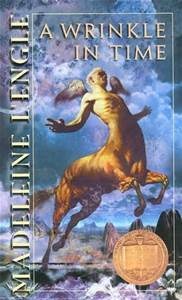 is going on with the city of Nephihah? First Amalickiah refuses to “go against” the city of Nephihah, but in the next breath we are told that he took possession of it.
is going on with the city of Nephihah? First Amalickiah refuses to “go against” the city of Nephihah, but in the next breath we are told that he took possession of it.
Not only that, the city of Nephihah was not actually captured by the Lamanites until five years later when Ammoron, brother of Amalickiah, sent his armies against it. (Alma 59:5-12)
Here we have a wrinkle in the text. A wrinkle in time.
Why does the author go to such lengths to include the taking of the city of Nephihah in his list when the city is not taken for another five years? And why does the author even make the story somewhat nonsensical in order to do so?
The answer is apparently that the author wanted to have a list of seven cities and not six that were taken by the Lamanites, and that he was willing to sacrifice chronological accuracy and even the textual flow of the story in order to do so.
Here is yet another example of the author consciously shaping “real world” information in order to arrive at the symbolically significant number of seven.
Conclusion
The number seven and its multiples were of symbolic significance in the ancient world, including among the writers of the Old and New Testaments.
The number seven and its multiples are also of symbolic significance in the Book of Mormon, which purports to derive from the same Old World milieu as the Bible.
Most importantly, the Bible contains instances of the author consciously and intentionally manipulating “real world” information in order to arrive at a symbolically significant number.  This is more than mere coincidence, and indicates not only an understanding and appreciation for Old World numerology on the part of the authors, but a willingness to superimpose that numerology on historical events to change the tally to the desired symbolic number.
This is more than mere coincidence, and indicates not only an understanding and appreciation for Old World numerology on the part of the authors, but a willingness to superimpose that numerology on historical events to change the tally to the desired symbolic number.
The Book of Mormon does exactly the same thing.
Regardless of one’s opinion as to who wrote the Book of Mormon, the text itself shows sure and unmistakable signs that the author or authors were not only aware of the significance of Old World numerology as it existed among the ancient Hebrews, but intentionally and consciously incorporated that numerology into the warp and woof of the Nephite record.


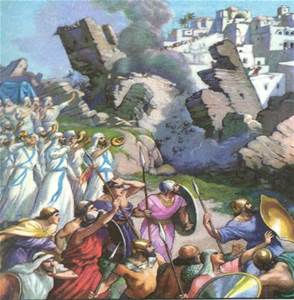



Corbin
The second Tuesday of every month I wake up early to read your posts.
This particular post (although deep) makes its way in helping me with one of our sons who is starting to believe the Book of Mormon is a fabrication of Joseph Smith’s imagination. He gives valid reasons to where I cannot argue with him.
Thank you for summarizing your original paper for us; We are going to discuss it as a family tonight and maybe, just maybe, it will help our son see the correlation to the bible.
Thank you
Maryann
You are super welcome, Maryann!
Mormonism claims the Book of Mormon is an ancient record translated into English by a nineteenth century American farm boy.
It is not surprising that it shows distinct signs of being a nineteenth century creation.
What surprises is that it also shows distinct signs of being a product of the ancient world.
In other words, The Book of Mormon is not exclusively ancient, nor is it exclusively modern. Those who seek to make it one or the other must discount a large amount of evidence, I believe.
It seems to be a combination of the two.
When I weigh the evidence, it seems to me to be an ancient record cloaked in the language (and to some degree, the experience) of an early 19th century farm boy living in upstate New York.
It is a remarkable book.
Or, if a 19th Century farm boy was trying to write an ancient record, it makes perfect sense that it would include both 19th Century and ancient world elements.
To some extent, that would be expected, I agree.
But only insofar as such Old World elements could reasonably be attributed to the 19th century farm boy.
This goes far beyond that, in my opinion.
Let’s change “19th century farm boy” with “19th century farm boy intimately familiar with the bible”.
I get a little tired of the message that Joseph was some kind of ignorant dummy. He was clearly very intelligent (some may say cunning) despite his lack of formal education.
On what basis do you believe Joseph Smith was “intimately familiar with the Bible” in 1829 when he dictated the Book of Mormon?
I can understand some intimacy with its contents may have been developed after praying his way through the Bible as part of the “Joseph Smith Translation,” but that did not begin until 1830 after the Book of Mormon was in print.
I believe the idea that Joseph Smith was “intimately familiar with the Bible” prior to the production of the Book of Mormon is one of those often-heard canards that has no basis in fact.
It is an assumption derived from the seemingly obvious fact that whoever authored the Book of Mormon was, indeed, “intimately familiar with the Bible.”
But that is arguing from the conclusion.
To my knowledge, there is no evidence Joseph Smith was “intimately familiar with the Bible” prior to his dictation of the Book of Mormon, and fairly solid evidence against the proposition.
To produce the Book of Mormon by natural means would require a Colossus of Bible knowledge.
It was simply and completely beyond the natural abilities of Joseph Smith, or any of his contemporaries.
7 and 70 are also important throughout Moby-Dick. And in one passage, the phrase "seven hundred and seventy seventh" is used SEVEN times. <YAWN>
I finally got around to reading Moby Dick last year, Connell. What an awesome book! Your comment is of interest to me.
Could you give me a cite on this so I can check it out for myself?
I appreciate it.
Excellent article — much of what Corbin wrote in this paper is new information to me. I enjoyed it. Thanks for posting and sharing with us.
Thanks for your kind words, JTS.
I would be surprised if this were not new information to you. It has never been published on before to my knowledge.
It is brand-spanking-new-research.
Have you (or has anyone you know of) looked for ancient numerology in the modern revelations (Doctrine and Covenants)?
I’m often turned off by numerology (especially if it tries to be subtle or seems to stretch the evidence), but I found your examples of how facts were manipulated to give the right number quite interesting.
Just did a quick scan of the first 30 sections and a word search for seven and fourteen in the Doctrine and Covenants. Fourteen only appears as a specific day in a month. Seven only appears as 1) biblical quotes, 2) referring to the 70 or their presidents, and 3) the number of high council members needed to make a quorum (7 is one more than half of 12). Looking for obvious lists of things that could be numbered in the text of sections 1-30, I found the following numbers:
Section Number Things numbered
3 –7 BoM tribes
4 –4 qualifications for work
–10 virtues to remember
12 –6 (or 4) qualifications for work
17 –4 (or 5) things the witnesses will be shown
20 –10 things an apostle does
–9 things a priest does
–7-10 things a teacher does
21 –5 things Joseph will be called
23 –5 people addressed in the revelation
26 –5 things they are instructed to do
29 –7 people present (including Joseph) when this revelation was given
–more than 10 groups of things that will happen at the second coming
30 –6 people mentioned in the revelation
It doesn’t appear, at first glance, that this same numerological care was taken with revelations put into the Doctrine and Covenants. There is certainly nothing as blatant as the massaging real numbers to fit 7 the way you’ve shown in the Book of Mormon.
Thanks for doing that additional research in the Doctrine and Covenants, Jonathan!
Your results are of interest.
Continuing with a few of the things I just mentioned in my last post to you, I was reading the Book of Acts Sunday and noticed that Paul’s stormy voyage takes 14-days. (Acts 27:27)
This is potentially a symbolic number. It may be that the voyage took a longer or shorter period of time and that the number was edited to make it symbolically significant.
But we can’t tell from the text, because there is no other place describing the length of the voyage for purposes of comparison.
But in the Book of Mormon, we have three instances that appear to give “real world” information that conflicts with a separate and distinct “numerologically significant” number.
1. The seven tribes
2. The seven years of supplies
3. The seven Nephite cities taken by the Lamanites
Each of these has additional textual information showing that the seven tribes were not seven tribes, but eight; that the seven years of supplies lasted not seven years, but between eight and nine years with supplies left over; and that the seven Nephite cities were actually six.
The author appears to have consciously manipulated this “real world” information to elsewhere set forth a different number of symbolic significance.
If this type of analysis were applied to the Bible, or any other text universally agreed upon to be ancient, I have little doubt that such observations as mine would nor raise an eyebrow.
They would be seen to be in line with commonly understood Old World scholarship on the subject.
It is only because these incidents appear in the Book of Mormon that they become a source of controversy.
It is not the scholarship that is controversial, but the text to which the commonplace methodologies are applied.
At least, that’s how I see it.
Thanks again!
I’ve found the same thing with Book of Mormon stylometry. The same types of stylometric measurements used to show that books of the Bible were not written by single authors are rejected as showing multiple, non-19th century authorship of the Book of Mormon because it is the Book of Mormon being studied. In any other context no one would blink an eye. They would say it’s obvious numerous authors contributed and that none of them were Joseph (or Oliver, Sidney, or Solomon).
Moses 7:9 And it came to pass that the Lord said unto me: Look; and I looked, and I beheld the land of Sharon, and the land of Enoch, and the land of Omner, and the land of Heni, and the land of Shem, and the land of Haner, and the land of Hanannihah, and all the inhabitants thereof;
Thank you for your comments, Jonathan. I understand your wariness of things like numerology. Shades of “The Bible Code” are bound to come to mind.
I feel the same way.
The BYU-Studies paper puts a lot of caveats out front regarding things like this, such as the fact that every list of things must comprise a certain number, and some of those numbers will, simply by happenstance, be a symbolically significant number.
Still, the fact that such coincidences do (and must) occur has not prevented Bible scholars from identifying numerous instances of such numerology in the Old and New Testaments.
The lynch-pin for me is the fact that the Book of Mormon contains documented instances of the author altering “real world” information to make it conform to a different number that is also of symbolic significance.
These types of instances will not be numerous, because we must first have the symbolic number, but also sufficient information in the text to let us know that the actual number was something different.
The example of Jesus’s genealogy in Matthew 1:1-17 is a classic instance of this.
I am not sure we could come up with any other such instances in the Bible, but the Book of Mormon appears to give us three.
As I stated in the blog, there appears to be more than coincidence going on here.
A couple of other comments I wanted to make for those interested.
Opening the window to the world of ancient numerology helps resolve some other conflicts between scriptural accounts and modern scientific understanding.
Because the number seven represented all things in heaven and earth, when the author of the Genesis creation account sat down to write the story of the creation of all things in heaven and earth, it was a virtual certainty that the author would choose the number of seven to describe the length of time in which it was accomplished.
I think this is why the Creation account lasts seven days–not because the number seven has anything to do with the “real world” information regarding the length of time the Creation took, but because the Creation of all things “in heaven (3) and earth (4)” must take seven days to complete.
Additionally, some scriptural accounts appear to set the length of the earth’s temporal existence at seven thousand years.
Taking this literally, it contradicts science.
Taken symbolically, we can understand it is not meant to convey “real world” information, but rather to convey the fact that the fullness of the time period of the earth’s existence is represented symbolically with the number “seven thousand.”
Corbin, hopefully you see this comment. I purchased your article and am reading it now. I was hoping to get a clarification on the previous study on the number 50 in the BoM. The footnote references the two welsh articles on 10 and 24 but I’d like to find the one on 50 as well!
That was interesting
This is one of the biggest white-washes which I have ever seen. I did an analysis of the number 7 (seven, seventh) using LDS.org and searched through all of the standard works. I then compared to the actual number of words in each of the texts and plotted out the results (comparing frequency for the number seven with all numbers between 1 and 20). The results are quite conclusive. Seven sticks out in the old and new testaments, but NOT in the Book of Mormon. In fact, there were fewer 7s than 6s in the case of the BOM. If anything this is looking like a MAJOR miss for the BOM, so arguing that it is a hit is either intentionally misleading or due to incompetence. In either case, it should be corrected. I am happy to send data, though this study is trivial to repeat.
Your analysis is insufficient. Looking for the words “seven” or “Seventh” is only going to reveal so much. You need to read Corbin’s “A Study in Seven” in BYU Studies 53:2. When you count, for instance, the families given in the Book of Mormon — Nephites, Jacobites, Josephites, Zoramites, Lamanites, Lemuelites and Ishmaelites — you get seven. Searching for the literal “seven” or “seventy” or “seventh” will, of course, miss the example given in Jacob 1:14. And so forth. There are all sorts of groupings of seven that your word search cannot find.
OK. It’s Jacob 1:13.
Are you kidding? If this is the case, why does the analysis clearly show trends for 3 and 12 (in the case of the BoM, Old and New testaments)? If the number 7 sticks out in the bible but is actually LESS than the number 6 in the case of the Book of Mormon, it means something. The BoM is not a Hebrew text. It does not have a Hebrew influence. It does have a biblical influence as Joseph was influenced by the Bible, but he wasn’t a Jew. Changing the data to fit your theory may make for good religion, but not for good science.
For a different (and arguably more unbiased) look at the number 7 and its usage in the Book of Mormon, see: http://mormonscholar.org/what-numbers-in-the-book-of-mormon-can-tell-us-about-the-book-of-mormon/ It appears that the usage of the number 7 in the Book of Mormon could be a strong argument against it’s authenticity as an ancient Hebrew text.
Thanks for putting this together! I’ve often pondered on the number 7. I do my scripture study with an app called scripture notes and they have an article on symbols and numerology that might be worth checking out! Super fun! Here’s a chart on symbolism with numerology Number Symbolism
Number Possible Meanings
1 God’s uniqueness; Holy; Deity; Singleness of purpose
2 A few; Companionship; Division; Unity; Oppression; Different
3 Power of God; Perfection; Complete; Covenant; Solid; Entire
4 Divine revelation; Complete harmony; Sufficiency; Completeness and Perfection; Totality; God’s creations; Man; Glory
5 Semi-complete; A few; Penalties; Rewards; Atonement; Grace; Temple
6 Evil; Apostasy; Man; Incomplete; One less than seven
7 Association with God; Fulfillment; Completion; Perfection; Sanctified; Covenant number; 3 + 4 (2 holy numbers added)
8 A new beginning; Abundant; Witness of Salvation; One after seven
9 The end; Last times or days; Judgment; Three times three; One less than ten
10 The Creation; Divine order; Completeness; Whole; Perfect under the covenant; Quite a few; Two times five; Three plus seven
11 Disorder; Disorganization
12 Union of the people of God; Elective purposes of God; Earthly Government; 3 x 4; Number of Israel
13 Rebellion; Apostasy; Defection; Corruption
14 The Messianic number (number of David)
15 Acts wrought by the power of God
20 Expectancy
24 Heavenly Government and worship
40 Time of spiritual preparation; Renewal; Newness; Life; A generation
42 Antichrist; Evil; Man’s opposition to God
50 Jubilee; Deliverance; God’s administration of the world
70 Gentiles; Those who bring gentiles into the house of Israel; God’s administration of the world
666 Number of the beast (Six, three times)
1000 The most; The highest number; Hyperbolic number for very large
144000 Number 12 (elect) squared times 1000
https://scripturenotes.com/number-and-color-symbolism-in-the-scriptures
another thing you might like is studying Gematria. It’s finding meaning in numbers with a hebrew originating system. The Hebrew language, absolutely proves the existence of a God beyond all doubt. No mortal could have come up with a system so complex and amazing to assign numeric values to letters which in turn tell such an intricate story behind the meaning of words and phrases.
https://scripturenotes.com/gematria-good-clean-fun